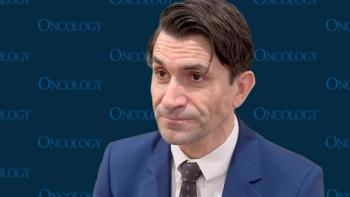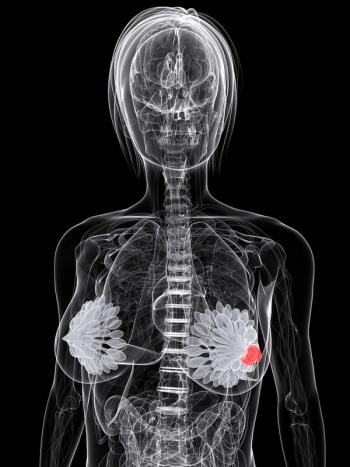
Oncology NEWS International
- Oncology NEWS International Vol 8 No 8
- Volume 8
- Issue 8
No Advantage to Extended-Field Irradiation in Advanced HD
LUGANO, Switzerland-The impact of radiotherapy on disease control and toxicity in patients with advanced Hodgkin’s disease remains controversial. In fact, a 1998 meta-analysis suggested that combined-modality therapy results in worse long-term survival than does chemotherapy alone.
LUGANO, SwitzerlandThe impact of radiotherapy on disease control and toxicity in patients with advanced Hodgkins disease remains controversial. In fact, a 1998 meta-analysis suggested that combined-modality therapy results in worse long-term survival than does chemotherapy alone.
Now, preliminary results from a randomized multicenter study performed by the French Adult Lymphoma Study Group (GELA) confirm that extended-field irradiation confers no additional survival advantage over chemotherapy by itself. The trial results were reported at the VII International Conference on Malignant Lymphoma.
The GELA investigators randomly assigned 559 patients with untreated stage IIIB/IV Hodgkins disease to receive, as induction chemotherapy, six cycles of either ABVPP (Adriamycin [doxorubicin], bleomycin, vinblastine, procarba-zine, and prednisone) or a MOPP/ABV hybrid (mechlorethamine, Oncovin [vincristine], procarbazine, and prednisone plus Adriamycin, bleomycin, vindesine).
Next, the 418 patients who achieved complete or partial remission were randomized to consolidation therapy with either two additional cycles of the same chemotherapy regimen or total nodal irradiation with 30 Gy plus 5 Gy for initially involved areas plus 5 Gy for residual masses.
Intention-to-treat analysis after 48 months of follow-up revealed no significant differences in event-free survival between the two induction regimens or the two consolidation regimens, or among the four treatment groups, observed Christophe Fermé, MD, of the Hematology Institute, Saint-Louis Hospital, Paris.
However, Dr. Fermé stressed, overall survival was significantly superior in patients who received ABVPP alone than in those treated with ABVPP plus extended-field irradiation (94% vs 78%). After ABVPP and radiotherapy, the risk of death was four times higher than after ABVPP alone, he said. In contrast, no survival differences emerged between MOPP/ABV alone and MOPP/ABV followed by radiotherapy.
These results suggest an interaction between the induction regimen and consolidation regimen, Dr. Fermé noted.
A Standard Regimen
Interestingly, the number of relapses was higher and the duration of complete response was shorter among patients assigned to chemotherapy alone than among those who received combined-modality therapy. Nonetheless, the results suggested a tendency toward a lower number of deaths attributable to Hodgkins disease among patients treated with chemotherapy alone.
Eight cycles of a conventional-dose doxorubicin-containing regimen can be a standard regimen if a complete response has been achieved after six cycles, Dr. Fermé advised. Before specific indications for adjuvant radiotherapy can be defined, he said, analyses of fatalities, results of salvage therapy, and long-term toxicity will be necessary.
Articles in this issue
over 16 years ago
False positives frequent in CT lung cancer screening trialover 26 years ago
Stereotactic Core Biopsy Establishes Many Prognostic Factorsover 26 years ago
Breast Cancer Prevention With Tamoxifen Appears Cost-Effectiveover 26 years ago
NCI Discovers Gene Variations From Existing Databasesover 26 years ago
CPDR Unveils First Center Solely for Prostate Cancer Researchover 26 years ago
Going Beyond CHOP in Advanced Large-Cell Lymphomaover 26 years ago
Memorial Sloan-Kettering Opens Rockefeller Outpatient Pavilionover 26 years ago
Ernst Wynder, Pioneer in Preventive Medicineover 26 years ago
AHCPR Plans Health Care Market, Managed Care Research Centersover 26 years ago
NSAIDs May Protect Against Common GI CancersNewsletter
Stay up to date on recent advances in the multidisciplinary approach to cancer.
















































































